Augmented Reality in Automotive:
- The Moolah Team
- Jul 10, 2023
- 10 min read
Enhancing Vehicle Design, Manufacturing, and Customer Experience.
This blog post will explore the ways AR is being used in the automotive industry, including practical applications and case studies of AR in enhancing vehicle design, manufacturing, and customer experience.
I. Augmented Reality in Automotive: Enhancing Vehicle Design, Manufacturing, and Customer Experience:
Augmented Reality (AR) is a technology that has been gaining popularity in many industries in recent years, and the automotive industry is no exception. AR is being used to enhance vehicle design, manufacturing, and customer experience in ways that were previously impossible. In this blog post, we will explore the practical applications and case studies of AR in the automotive industry.
The introduction of AR in the automotive industry has brought about numerous benefits, from the design stage to the manufacturing process, and even to the customer experience. By superimposing digital information onto real-world objects, AR has revolutionized the way that vehicles are designed, built, and used. AR enables designers to visualize their creations in real-world conditions, making it easier to detect flaws and make modifications. This has reduced the time and resources required to create physical prototypes, making the design process more efficient.
AR is also being used in the manufacturing process to provide workers with digital overlays that provide step-by-step instructions for assembly and maintenance. This has improved the accuracy and efficiency of the manufacturing process and has reduced the likelihood of errors. Additionally, AR is being used for quality control, enabling manufacturers to quickly identify defects or issues that need to be corrected.
AR is not only transforming the design and manufacturing of vehicles but is also enhancing the customer experience. By creating virtual showrooms that allow customers to view and customize their preferred car models in 3D, AR is providing a more immersive and engaging way of showcasing products. AR is also being used to enhance the test drive experience by overlaying digital information onto the windshield, making it easier for drivers to see important information such as speed, directions, and points of interest. AR is even being used to provide customers with training on how to use the different features and functionalities of the vehicle in a more interactive and engaging way.
In conclusion, AR is transforming the automotive industry by enhancing vehicle design, manufacturing, and customer experience. It is providing a more efficient and effective way of designing and manufacturing vehicles, improving the accuracy and efficiency of the manufacturing process, and enhancing the customer experience by providing a more immersive and engaging way of viewing and using the cars. As the technology continues to evolve, we can expect to see even more innovative applications of AR in the automotive industry.

"II. AR in Vehicle Design":
Vehicle design is a critical aspect of the automotive industry, and AR is transforming the way that vehicles are designed. AR enables designers to create virtual prototypes and visualize them in real-world conditions, providing a more accurate and efficient way of designing vehicles.
One of the most significant benefits of AR in vehicle design is that it enables designers to detect flaws and make modifications more quickly and efficiently. By creating virtual prototypes, designers can see how their designs will look and perform in real-world conditions, allowing them to make changes before a physical prototype is created. This reduces the time and resources required to create physical prototypes, making the design process more efficient.
AR is also being used to provide designers with a more immersive and engaging way of visualizing their designs. By superimposing digital information onto physical objects, designers can see how their designs will look in real-world conditions, providing a more accurate and realistic representation of the final product. This has revolutionized the way that designers approach vehicle design, enabling them to create more innovative and creative designs.
In addition to improving the design process, AR is also being used to enhance the collaboration between designers and engineers. By creating virtual prototypes that can be shared and edited in real-time, AR is enabling designers and engineers to work together more effectively, reducing the time and resources required to create physical prototypes.
AR is also being used to enhance the testing and validation of vehicle designs. By creating virtual simulations of real-world conditions, AR is enabling designers to test their designs in a more accurate and efficient way. This has improved the accuracy and reliability of vehicle testing, reducing the time and resources required to validate vehicle designs.
In conclusion, AR is transforming the way that vehicles are designed by providing designers with a more accurate, efficient, and engaging way of visualizing their designs. By creating virtual prototypes and superimposing digital information onto physical objects, AR is enabling designers to create more innovative and creative designs. Additionally, AR is improving the collaboration between designers and engineers, and enhancing the testing and validation of vehicle designs. As the technology continues to evolve, we can expect to see even more innovative applications of AR in vehicle design.
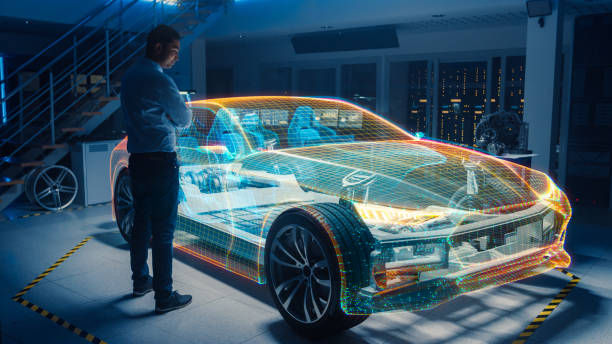
III. AR in Vehicle Manufacturing":
The manufacturing process is another critical aspect of the automotive industry, and AR is transforming the way that vehicles are manufactured. AR is being used in various stages of the manufacturing process, from assembly line production to quality control and inspection.
One of the most significant benefits of AR in vehicle manufacturing is that it enables workers to perform their tasks more efficiently and accurately. By superimposing digital information onto physical objects, workers can see precisely where parts need to be placed, reducing the time and resources required to complete a task. This has improved the productivity and quality of the manufacturing process, reducing the likelihood of errors and defects.
AR is also being used to provide workers with more immersive and engaging training. By creating virtual simulations of real-world manufacturing processes, AR is enabling workers to gain hands-on experience in a safe and controlled environment. This has improved the effectiveness and efficiency of training, reducing the time and resources required to train workers.
AR is also being used to enhance the collaboration between workers and engineers. By creating virtual prototypes that can be shared and edited in real-time, AR is enabling workers and engineers to work together more effectively, reducing the time and resources required to create physical prototypes.
In addition to improving the efficiency and effectiveness of the manufacturing process, AR is also being used to enhance the quality control and inspection of vehicles. By creating virtual simulations of real-world conditions, AR is enabling workers to identify defects and issues more accurately and efficiently. This has improved the accuracy and reliability of quality control and inspection, reducing the likelihood of defects and errors.
In conclusion, AR is transforming the way that vehicles are manufactured by providing workers with a more efficient, accurate, and engaging way of performing their tasks. By superimposing digital information onto physical objects, AR is improving the productivity and quality of the manufacturing process, while also enhancing the training and collaboration between workers and engineers. Additionally, AR is improving the quality control and inspection of vehicles, reducing the likelihood of defects and errors. As the technology continues to evolve, we can expect to see even more innovative applications of AR in vehicle manufacturing.

IV. AR in Customer Experience":
The customer experience is a critical aspect of the automotive industry, and AR is being used to enhance it in various ways. AR is enabling customers to visualize and customize their vehicles, providing them with a more immersive and engaging experience.
One of the most significant benefits of AR in customer experience is that it enables customers to see a realistic and interactive 3D visualization of the vehicle they are interested in. This provides customers with a better understanding of the vehicle's features, capabilities, and design, allowing them to make a more informed purchase decision.
AR is also being used to provide customers with a more personalized experience by enabling them to customize the vehicle's exterior and interior features. By superimposing digital overlays onto a real-world vehicle, customers can visualize how different features would look on the vehicle, allowing them to make more informed decisions about the customization options available to them.
AR is also being used to provide customers with a more engaging and interactive experience in showrooms and dealerships. By creating virtual showrooms, AR is enabling customers to explore and interact with the vehicles in a more immersive and engaging way. This has improved the overall customer experience, making it more memorable and enjoyable.
AR is also being used to provide customers with a more engaging and interactive experience during the vehicle ownership experience. By providing customers with AR-enabled manuals and guides, they can access helpful information and instructions about the vehicle's features and capabilities in an interactive and engaging way. This has improved the overall customer satisfaction and loyalty, enhancing the long-term relationship between the customer and the manufacturer.
In conclusion, AR is enhancing the customer experience in the automotive industry by providing customers with a more immersive, engaging, and personalized way of visualizing and customizing their vehicles. By providing customers with realistic and interactive 3D visualizations of the vehicles, AR is improving the customer's understanding of the vehicle's features, capabilities, and design. Additionally, AR is improving the overall customer experience in showrooms and dealerships, as well as during the vehicle ownership experience, by providing customers with a more engaging and interactive way of accessing helpful information and instructions about the vehicle's features and capabilities.
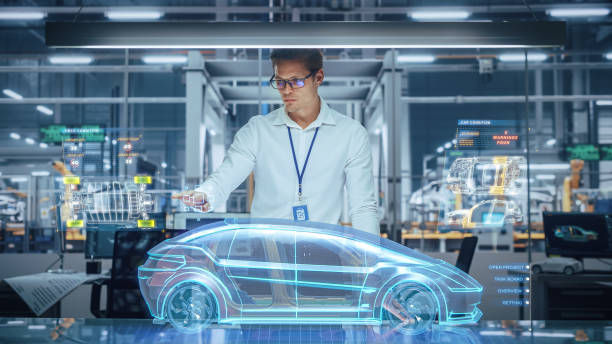
V. AR Challenges and Limitations in Automotive":
While AR technology has many benefits in the automotive industry, it also faces several challenges and limitations that must be addressed.
One of the primary challenges is the high cost of developing and implementing AR technology. AR technology requires significant investment in hardware and software development, as well as training for personnel. This can be a significant barrier to entry for smaller automotive manufacturers or those with limited budgets.
Another challenge is the limited availability of skilled personnel capable of developing and implementing AR technology. The development of AR technology requires a range of specialized skills, including 3D modelling, computer vision, and software engineering. There is currently a shortage of skilled personnel with these skills, which can limit the adoption of AR technology in the automotive industry.
AR technology also faces limitations related to the accuracy and reliability of the technology. AR systems rely on accurate tracking of the user's position and orientation in real-time, which can be challenging in certain environments, such as outdoor environments with changing lighting conditions. Additionally, the accuracy of the AR overlay must be maintained as the user moves around the vehicle, which can be difficult to achieve.
Another limitation is the need for high-quality data to develop accurate AR models. The accuracy and effectiveness of AR models are heavily dependent on the quality and quantity of data used to train them. This can be challenging in the automotive industry, where vehicle designs and configurations can change rapidly, and data may not always be available or accurate.
Finally, there are limitations related to the adoption and acceptance of AR technology by consumers. While AR technology has the potential to enhance the customer experience and improve the manufacturing process, it may not be readily accepted by all consumers. Some consumers may prefer traditional methods of visualizing and customizing vehicles, and may not be comfortable using AR technology.
In conclusion, while AR technology has many benefits in the automotive industry, it also faces several challenges and limitations that must be addressed. These include the high cost of development and implementation, the limited availability of skilled personnel, accuracy and reliability issues, the need for high-quality data, and challenges related to adoption and acceptance by consumers. By addressing these challenges and limitations, automotive manufacturers can unlock the full potential of AR technology and continue to enhance their design, manufacturing, and customer experience capabilities.
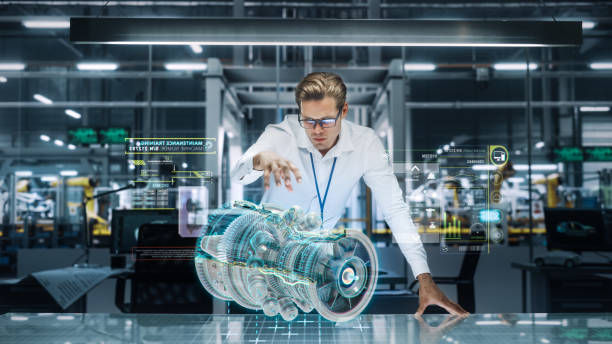
VI. The Future of AR in Automotive":
As AR technology continues to evolve and improve, the future of AR in the automotive industry looks promising. With the potential to enhance vehicle design, manufacturing, and customer experience, AR technology is likely to become an increasingly important tool for automotive manufacturers.
One area where AR technology is likely to have a significant impact is in the design process. AR technology can allow designers to visualize and test different vehicle designs in real-time, enabling them to make faster and more informed design decisions. This can help to reduce the time and cost required for design iterations and bring new vehicles to market more quickly.
AR technology also has the potential to revolutionize the manufacturing process. By using AR technology to guide assembly workers, manufacturers can improve the speed and accuracy of the assembly process, reduce errors, and increase productivity. Additionally, AR technology can be used to train new assembly workers, reducing the time and cost required for training.
Another area where AR technology can have a significant impact is in the customer experience. AR technology can enable customers to visualize and customize vehicles in real-time, allowing them to make more informed purchasing decisions. This can help to improve customer satisfaction and loyalty, as well as reduce the time and cost required for the sales process.
Looking to the future, AR technology is likely to continue to evolve and improve, with new applications and use cases emerging. For example, AR technology could be used to provide real-time diagnostic information to mechanics, enabling them to diagnose and repair vehicles more quickly and accurately. AR technology could also be used to enhance the safety and convenience of driving, by providing drivers with real-time information on road conditions, traffic, and potential hazards.
In conclusion, the future of AR in the automotive industry looks promising, with the potential to enhance vehicle design, manufacturing, and customer experience. By embracing AR technology and addressing the challenges and limitations it faces, automotive manufacturers can unlock the full potential of this technology and continue to drive innovation and growth in the industry.

VII. Conclusion: The Benefits of AR in Automotive":
In conclusion, augmented reality technology is transforming the automotive industry by enhancing vehicle design, manufacturing, and customer experience. By leveraging AR technology, automotive manufacturers can accelerate the design process, improve the manufacturing process, and provide a more personalized and engaging customer experience.
AR technology can enable designers to visualize and test vehicle designs in real-time, allowing for faster and more informed design decisions. It can also enable manufacturers to guide assembly workers and train new workers more efficiently, improving productivity and reducing errors. For customers, AR technology can provide a more engaging and informative experience, allowing them to visualize and customize their vehicles before making a purchase.
One of the main benefits of AR technology is its ability to improve collaboration between different stakeholders in the automotive industry. By using AR technology to create virtual design and manufacturing environments, designers, engineers, and manufacturers can work together more effectively, reducing the time and cost required for development and production.
AR technology also has the potential to reduce waste and improve sustainability in the automotive industry. By enabling designers and manufacturers to test and optimize designs before they are produced, AR technology can help to reduce the amount of material and energy used in production. This can help to reduce the environmental impact of the automotive industry and make it more sustainable in the long term.
As with any new technology, AR in automotive also faces some challenges and limitations, such as the need for high-quality data and the potential for technical issues. However, by addressing these challenges and working to improve the technology, the benefits of AR in automotive can be fully realized.
In summary, the benefits of AR in automotive are significant, and the technology is set to play an increasingly important role in the industry in the coming years. By embracing AR technology and working to overcome the challenges it faces, automotive manufacturers can unlock the full potential of this technology and continue to drive innovation and growth in the industry.
Thank you for reading this blog post on the use of augmented reality in the automotive industry. We hope you found the information informative and insightful. Augmented reality is revolutionizing the way vehicle design, manufacturing, and customer experience are being approached, and we can't wait to see what the future holds for this exciting technology.
If you enjoyed this post, be sure to subscribe to our newsletter for more updates and insights on the latest advancements in technology and industry practices. Thanks for reading, and we look forward to sharing more with you soon.
Thanks a million!
From Moolah




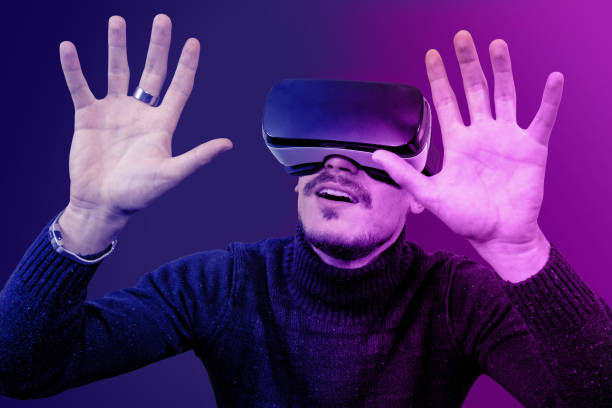
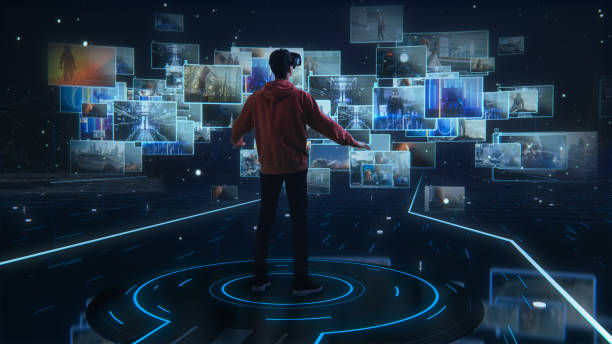

Comments